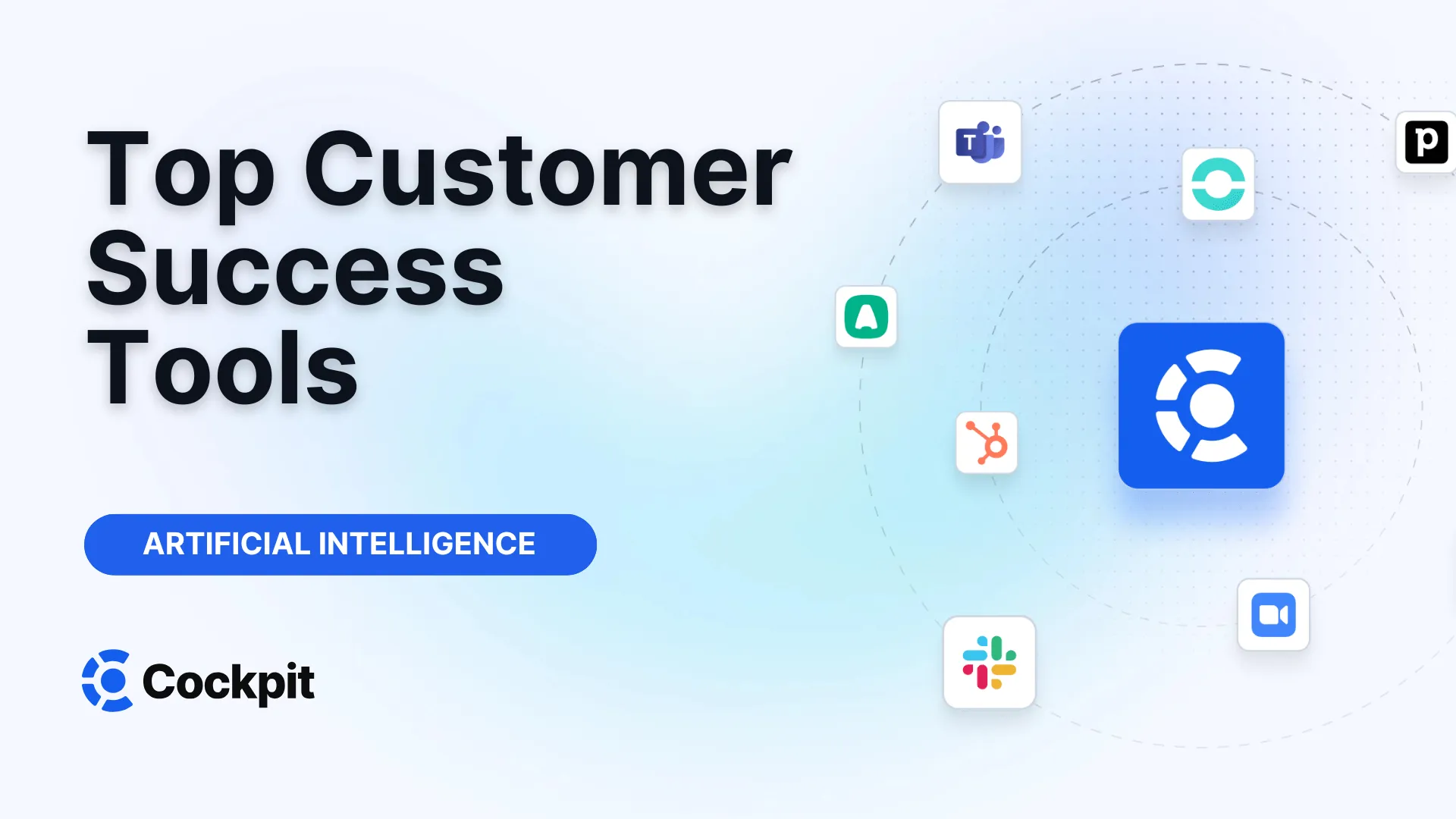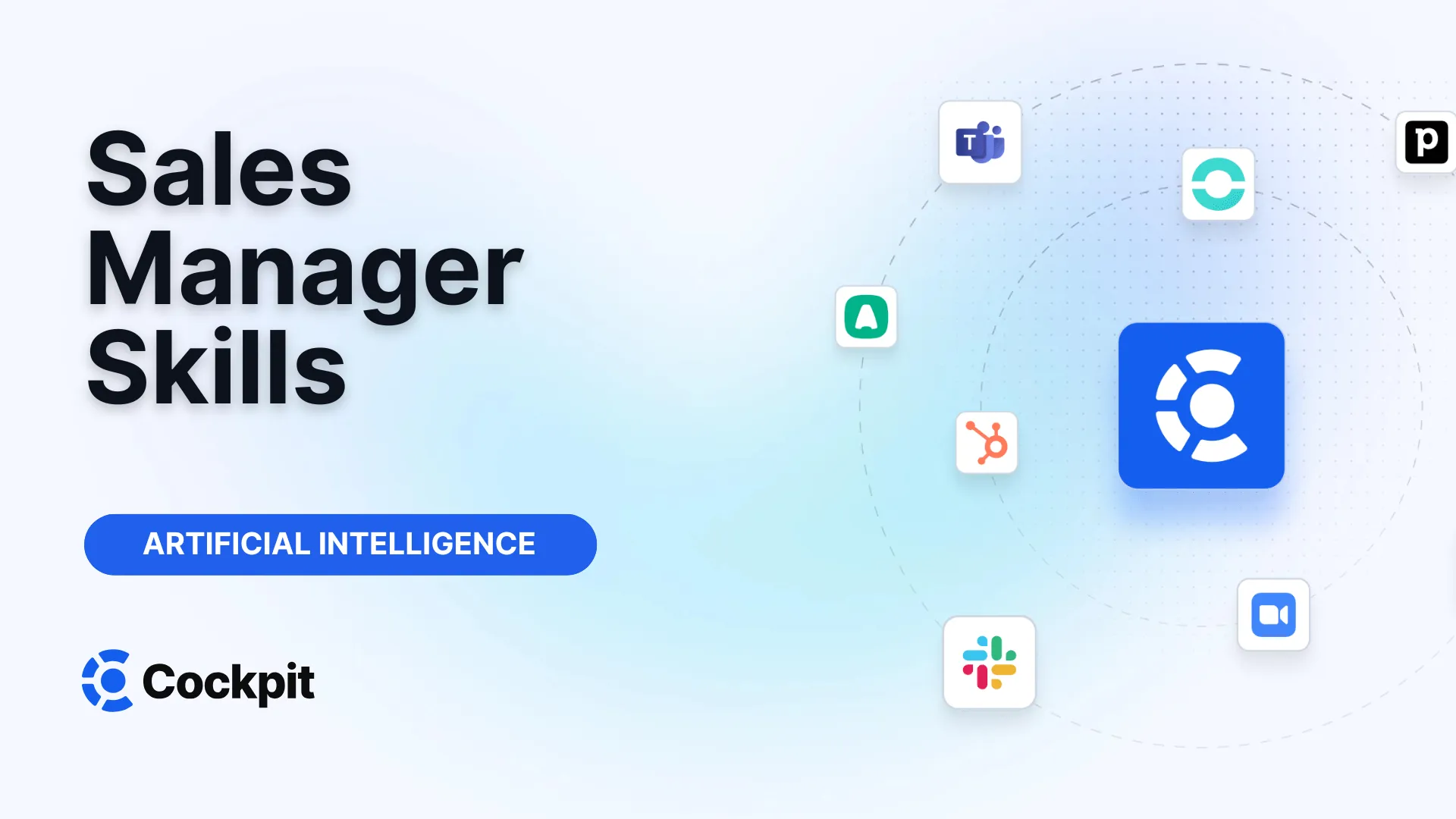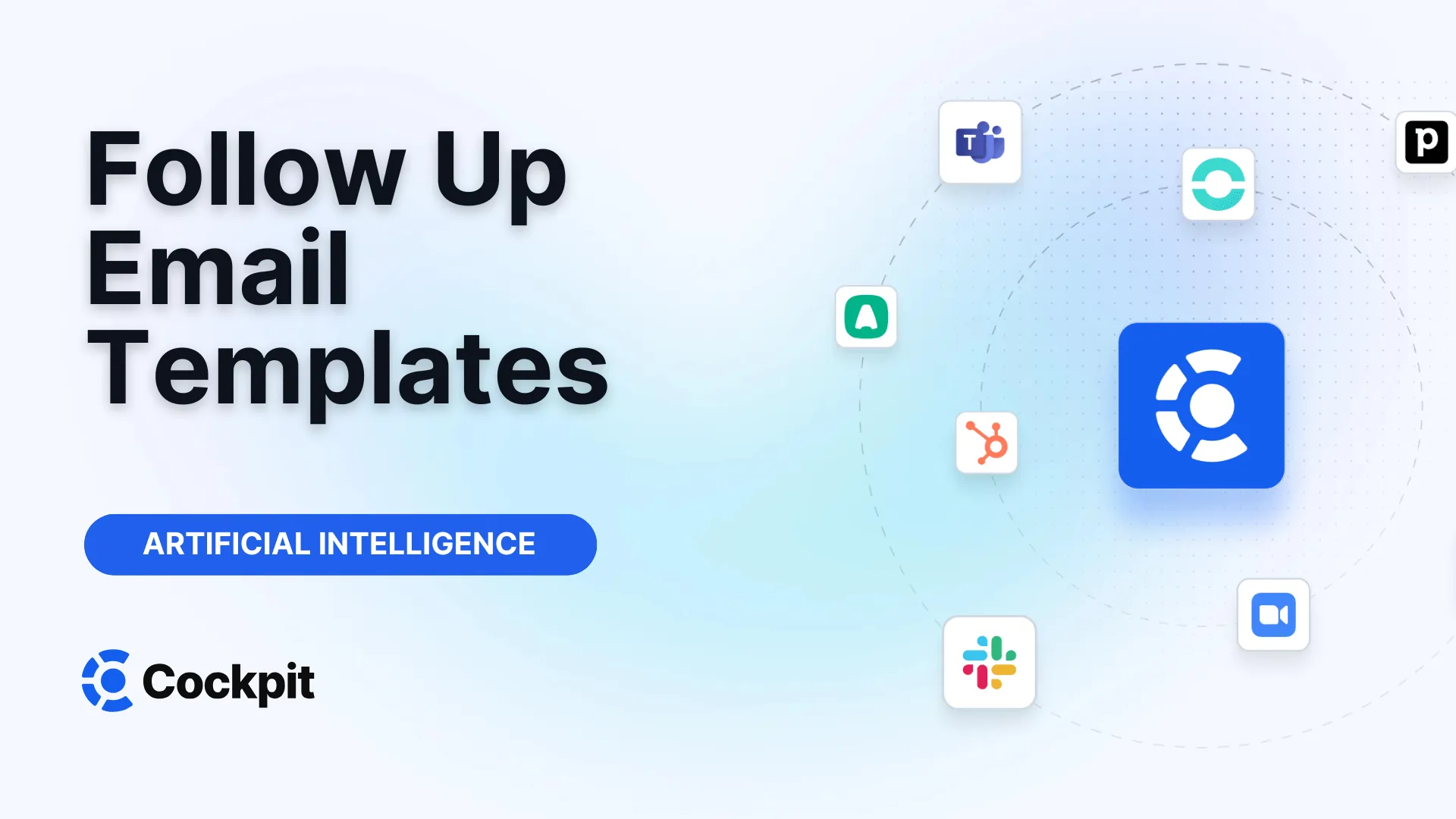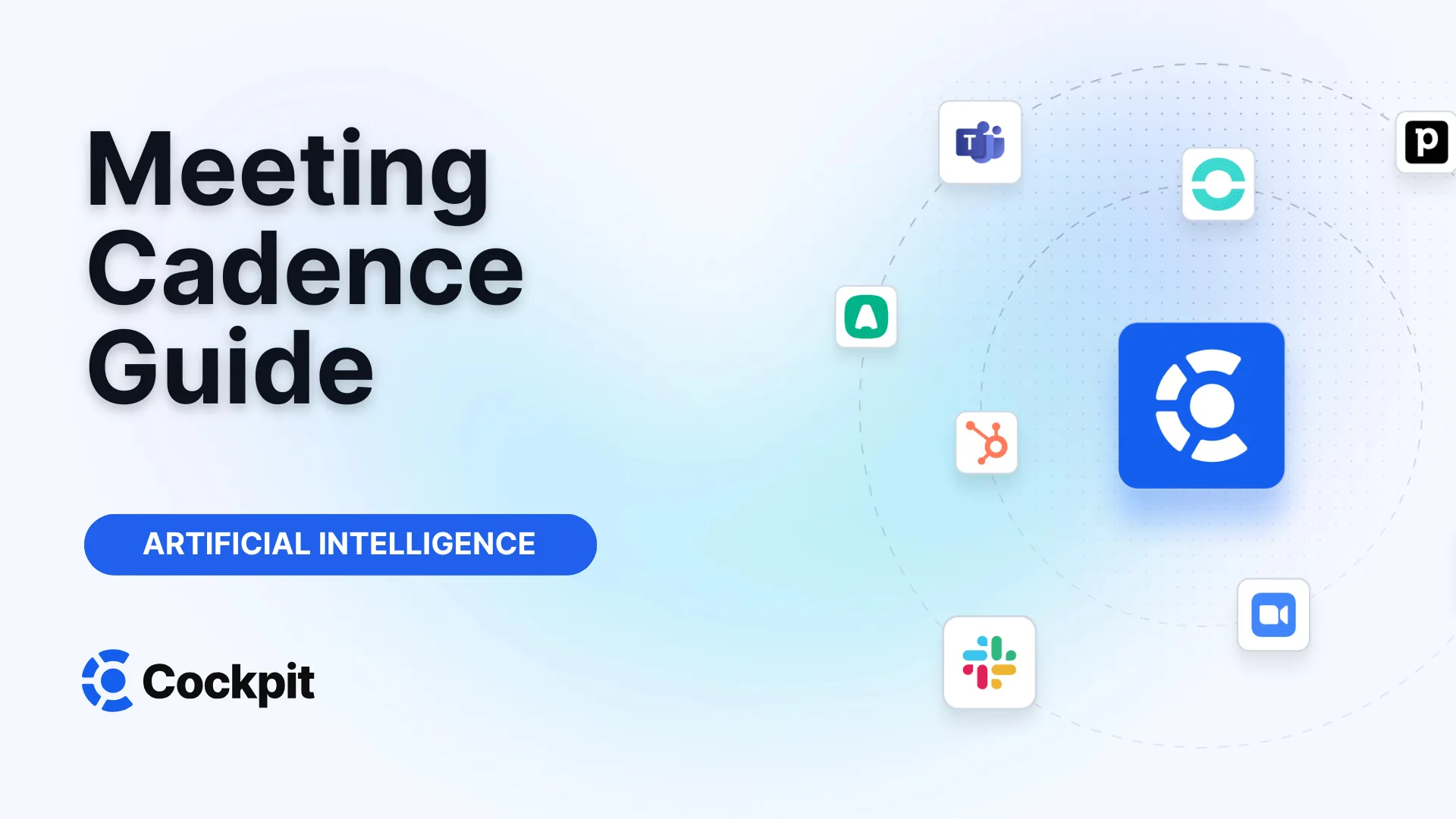Optimize your sales force in just a few clicks

Thousands of sales teams boost their performance with Cockpit. Why shouldn't you?
Explore CockpitSummary
You are launching a Customer Success team and already feel overwhelmed by the amount of information to track? Do your CSMs spend more time searching for data in spreadsheets than engaging with your clients? How can you know if a client is about to leave you before it is too late? If these questions resonate with you, then you have already identified a major challenge: without the right tools, even the best customer success strategy risks fading away.
The goal is not just to accumulate software but to build a technological ecosystem that frees your teams from low-value tasks so they can focus on what truly matters: your clients' success. It is about transforming raw data into strategic conversations and weak signals into proactive actions.
What is Customer Success and Why Is It Crucial?
Customer Success is much more than simple after-sales service. It is a comprehensive business strategy aimed at ensuring your clients achieve their desired goals by using your product or service. The idea is simple: a successful client is a client who stays, increases their spending, and becomes a brand ambassador. This proactive approach shifts the focus from mere problem-solving (reactive) to anticipating needs and creating continuous value (proactive).
In a market where acquiring new customers is increasingly expensive, retention becomes the main driver of growth. Customer Success guarantees this retention. CSM teams are on the front line to build lasting relationships, deeply understand client use cases, and identify improvement opportunities—for both the client and your product. An effective Customer Success strategy directly impacts monthly recurring revenue (MRR), reduces churn rate, and increases customer lifetime value (LTV).
The Risks of Managing Customers Without Dedicated Tools
Trying to manage customer success without appropriate technology is like navigating the open sea without a compass or map. The risks are numerous and can quickly turn a growth opportunity into a churn spiral. Without customer success software, you expose yourself to critical blind spots.
The first danger is missing early warning signals. A client whose product usage declines, who misses key milestones, or stops contacting support may be in "silent risk." Without a tool that centralizes and analyzes this data, these weak signals remain invisible until the cancellation email arrives. Additionally, you lose a treasure trove of information: client feedback and sentiment. This feedback is essential for assessing account health and guiding your product roadmap.
Finally, inefficiency becomes the norm. When customer data is scattered across CRM, messaging, spreadsheets, and personal notes, your CSMs waste valuable time. Instead of strategically advising their clients, they spend hours compiling information. This administrative burden not only frustrates your teams but also prevents them from reaching their full potential, harming the overall company performance.
Expert Tips
Never underestimate the hidden cost of inefficiency. The time your CSMs spend searching for information and manually updating the CRM is time they do not spend preventing churn or identifying upsell opportunities. A good tool primarily saves the team time to maximize their strategic impact.
Key Features of a Customer Success Platform
To counter these risks, modern Customer Success platforms offer a suite of features designed to centralize, analyze, and act on customer data. Choosing the right solution depends on your specific needs, but some features have become industry standards.
360-Degree Customer View: The Foundation of Success
The concept of "Customer 360" is fundamental. It is a unified view that gathers all information related to a client in one place. This includes:
- CRM data (contact information, contract history).
- Product usage data (login frequency, features used).
- Interaction history (support tickets, calls, emails).
- Satisfaction survey responses (NPS, CSAT).
Having this complete view allows any team member to instantly understand a client’s context, journey, and current health status.
Success Plans and Health Scores
To make success measurable, the best tools enable you to create success plans. These are roadmaps shared with clients detailing their goals, steps to achieve them, and KPIs to track progress. It’s an excellent way to align your actions with client expectations.
The customer health score is another essential feature. It aggregates various metrics (usage, satisfaction, support interactions, etc.) into a single, easy-to-interpret score (often color-coded: green, yellow, red). This allows CSMs to prioritize their efforts on accounts that need it most and identify large-scale trends.
Automation and Scalable Communication
As your customer base grows, maintaining personalized contact with each client becomes impossible. Customer Success tools automate communication for less strategic client segments (a "tech-touch" approach). This can take the form of:
- Welcome or follow-up emails triggered by specific events.
- Satisfaction surveys sent at key points in the customer lifecycle.
- In-app notifications guiding users towards new features.
This automation ensures no client is left behind while freeing up time for CSMs to focus on high-value accounts.
How Customer Success Tools Improve Retention and Growth
Adopting CSM tools is not an expense but a direct investment in your company's growth. By equipping your teams with the right technologies, you unlock several performance levers that directly impact your revenue.
Anticipate Churn Through Weak Signals
The ability to predict churn risk is arguably the best-known benefit. By centralizing usage and satisfaction data, health scores help identify "yellow" or "red" clients well before they show intent to leave. An alerted CSM can proactively intervene: offer training, resolve blocking issues, or simply reconnect to understand the situation. This marks the shift from a firefighter mindset to that of a retention architect.
Transform Data into Strategic Conversations
Data is good. Conversations are better. The real challenge is to turn dashboard metrics into constructive dialogue with the client. This is where new-generation tools like AI meeting assistants come into play.
Imagine a CSM preparing a quarterly business review (QBR). Instead of relying on scattered notes and cold CRM data, they can access the recording and smart summary of every past client call. They instantly find the objections raised, the goals mentioned, and even the tone used by the client.
This is exactly what Cockpit enables. By automatically recording, transcribing, and summarizing every client exchange, our platform provides CSMs with invaluable material for more relevant and strategic conversations. They no longer just present usage charts; they can say: "During our last call, you mentioned wanting to improve X. Here is how we have progressed."
Encourage Upsell and Cross-sell
A happy and successful client is the ideal candidate for additional sales. Customer Success tools help identify these opportunities in two ways. First, a high health score strongly indicates a client is ready to expand their usage. Second, by analyzing feature usage, a CSM can spot an unmet need within the current subscription and propose a relevant solution. AI meeting assistants like Cockpit go further by detecting keywords in conversations signaling interest in other products or services, generating automatic alerts for the sales team.
Choosing the Right Customer Success Solution for Your Team
The customer success manager tools market is vast. It is easy to get lost between all-in-one platforms and niche tools. The key is to adopt a pragmatic approach focused on your real needs and maturity.
Assess Your Needs: From Startup to Enterprise
As shown by many CS team founders, it is not always necessary to start with the heavy artillery. A nascent team can begin with lighter tools before investing in a full platform.
| Team Size | Priority Needs | Recommended Tools Examples |
|---|---|---|
| 1-3 CSM (Startup) | Centralized notes, task tracking, simple communication. | Well-configured CRM, project management tool (Trello, Asana), AI meeting assistant (Cockpit). |
| 4-10 CSM (Scale-up) | Health scores, initial success plans, simple automation. | Entry-level CS platform, product analytics tools (Pendo, Mixpanel), Cockpit for coaching. |
| 10+ CSM (Enterprise) | Complete 360 view, advanced automation, complex reporting. | Leading CS platform (Gainsight, Catalyst), deep BI integration, Cockpit for overall alignment. |
Note
User adoption is the number one success factor for any new tool. A powerful but complex platform will be less effective than a simple and intuitive tool your team actually uses daily. Prioritize solutions with rapid deployment, like Cockpit, which integrates in under 5 minutes.
The Crucial Importance of Integrations
A Customer Success tool does not live in isolation. Its value multiplies by connecting to your existing ecosystem. The most critical integration is with your CRM (Salesforce, HubSpot, etc.). It must be bidirectional: the CS tool pulls data from the CRM and enriches it with valuable information like health scores or meeting summaries.
Also consider other key integrations:
- Video conferencing tools (Zoom, Google Meet, Teams) to automatically capture exchanges.
- Support tools (Zendesk, Intercom) to integrate tickets into the 360 view.
- Team messaging (Slack, Teams) to share alerts and important information.
Our platform, Cockpit, natively connects to your video, telephony, and CRM tools to ensure smooth, effortless synchronization.
What Budget Should You Allocate to Your Tools?
Pricing for Customer Success software varies greatly, ranging from a few dozen euros per user per month to tens of thousands of euros per year for enterprise platforms. Common models include per-user pricing, feature tiers, or number of clients tracked.
Our advice: start by clearly defining the problem you want to solve. Is it saving time on admin? Better visibility into customer health? Coaching your teams? Once your goal is clear, take advantage of free trials to test solutions. Cockpit, for example, offers a free trial to discover the power of automated notes and CRM enrichment with no commitment.
Beyond Platforms: Complementary Tools for a Productive CSM
If CS platforms form the backbone of your tech stack, other tools can act as multipliers of productivity and efficiency.
AI Meeting Assistants: Never Miss a Detail in Client Exchanges
The most time-consuming and least appreciated task of CSMs is often note-taking and CRM updates after each call. This distracts them from active listening and is prone to omissions and inaccuracies.
AI meeting assistants, like Cockpit, revolutionize this part of the work. Here’s how:
- Automatic recording and transcription: The tool connects to your calls (video or phone) and transcribes the entire conversation in real time.
- Intelligent AI summary: At the end of the call, AI generates a structured summary based on customizable templates (e.g., QBR model, onboarding model). It identifies key points, decisions made, and next steps.
- Automatic CRM synchronization: The summary and key information (next steps, objections, etc.) are automatically sent to the appropriate fields in your CRM. No more double entry.
The benefit is threefold: significant time savings for CSMs, data quality and consistency in the CRM, and most importantly, CSMs fully focused on their clients during exchanges.
Coaching and Continuous Improvement Tools
How can you ensure your CSMs follow the right methodology? How to onboard new hires effectively? Traditionally, managers had to listen in on live calls, a time-consuming and hard-to-scale practice.
That’s where Cockpit’s AI Playbook feature comes in. Our AI can analyze call transcripts to:
- Objectively score performance: Verify if the CSM followed pitch steps, spoke about the right features, or asked appropriate discovery questions.
- Create best-practice libraries: Managers can create "playlists" of the best call moments (excellent objection handling, perfect value presentation) and share them with the team for training.
This turns each call into a learning opportunity and enables personalized, data-driven coaching.
Attention
Managing customer data, especially call recordings, requires a high level of security and compliance. Ensure the tools you choose comply with GDPR and have strong security certifications. Platforms like Cockpit are audited and certified to guarantee data encryption and strict access controls.
Future Trends in Customer Success Management
The field of Customer Success is constantly evolving, as are the tools that support it. Three major trends are emerging for the coming years. The first is the ubiquity of AI, which goes beyond summaries. We will see more predictive AI to anticipate churn with greater accuracy and generative AI to draft follow-up emails or success plans.
The second trend is the rise of Digital Customer Success. This involves using technology to deliver personalized customer success experiences at scale, especially for large customer segments. This includes automated onboarding journeys, intelligent help centers, and proactive, targeted communication.
Finally, there is a growing convergence between Product, Sales, and Customer Success teams. Boundaries are blurring. Customer feedback collected by CSMs through tools like Cockpit directly feeds the product roadmap. Customer health information helps sales target upsell efforts better. Future tools will need to facilitate cross-team collaboration and break down data silos to create a unified "voice of the customer" shared across the company.
Ultimately, choosing the right Customer Success Manager tools is not just a technical decision. It is a strategic choice that defines your company’s ability to grow by leveraging its greatest strength: the success of its clients. By automating administrative tasks and providing actionable insights, you empower your teams to build lasting, profitable relationships. Technology does not replace humans; it enhances them, enabling them to focus on listening, strategy, and empathy.
What Are the First Steps to Implement a Tooling Strategy for My Customer Success Team?
Implementing an effective tooling strategy does not have to be an insurmountable mountain. Here is a pragmatic 5-step approach to get started well:
- Audit your current processes: Before looking for a solution, precisely identify friction points. Where do your CSMs lose the most time? What crucial information are you missing? List the top 3 problems to solve.
- Define clear and measurable objectives: What do you want to accomplish? "Reduce CRM data entry by 5 hours per week," "Detect 80% of at-risk accounts one month in advance," "Improve post-onboarding satisfaction score by 15%." Clear objectives will guide your choice.
- Start small and iterate: There is no need for the most expensive platform on day one. Begin with tools that solve your most urgent problem. Take advantage of free trials, such as Cockpit, to test the real impact of a tool on your team’s productivity.
- Prioritize integration: Make sure the tool you choose can easily connect to your CRM and other critical systems. A solution that creates a new data silo is counterproductive.
- Involve your team in the choice: Your CSMs will use the tool daily. Involve them in testing and selection. Their buy-in is key to successful implementation.




